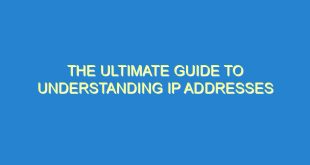Introduction to BT Sockets
BT sockets, also known as British Telecom sockets, are the main connection points for phone lines in the UK. These sockets are typically found in homes and businesses, and they allow users to connect their phones and other devices to the telephone network.
BT sockets have been around for decades, and they have evolved over time to keep up with changes in technology. Today, there are several types of BT sockets available, each with its own unique features and benefits.
Types of BT Sockets
BT Socket 431a
The BT Socket 431a is the most common type of BT socket found in UK homes and businesses. It is a basic socket that allows users to connect their telephones to the telephone network. The socket has six connections, which are used for different functions, including connecting the phone line and providing power to the phone.
BT Socket 631a
The BT Socket 631a is similar to the 431a, but it has an additional connection for broadband. This socket is often used in homes and businesses that require both phone and broadband connections. The socket has seven connections in total, with six used for phone connections and one for broadband.
BT Socket 66
The BT Socket 66 is a newer type of BT socket that is designed for use with fiber optic broadband. It has two connections for broadband, which allows for faster speeds and more reliable connections. The socket also has six connections for phone connections.
BT Socket 80a
The BT Socket 80a is a master socket that is used as the main connection point for phone lines in a home or business. It has six connections for phone connections and one for broadband. This socket is often used by engineers to test the phone line and diagnose any problems.
Installation of BT Sockets
DIY Installation
If you have basic DIY skills, you may be able to install a BT socket yourself. However, you should be aware that this can be a complex process, and there are some risks involved. You will need to follow the instructions carefully and ensure that you have the right tools and equipment.
The first step in installing a BT socket is to identify the location where you want to install it. This should be a place where you have easy access to the phone line and where you can connect your phone without any problems.
Next, you will need to remove the cover from the existing socket and disconnect the wires. You will then need to connect the wires to the new socket, following the instructions provided. Once the connections are made, you can replace the cover and test the socket to ensure that it is working correctly.
Professional Installation
If you are not confident in your DIY skills, or if you want to ensure that your BT socket is installed correctly, you may want to consider hiring a professional to do the job. A professional installer will have the skills and experience needed to install your BT socket quickly and efficiently.
Before hiring an installer, you should make sure that they are qualified and experienced. You should also ask for references and check reviews online to ensure that they have a good reputation.
Benefits of BT Sockets
Reliability
BT sockets are designed to be reliable and durable, and they are built to last for many years. This means that you can rely on your BT socket to provide a consistent and high-quality connection to the telephone network.
Flexibility
BT sockets are available in several different types, which means that you can choose the one that best suits your needs. Whether you need a basic socket for phone connections or a more advanced socket for broadband, there is a BT socket that will meet your requirements.
Easy to Use
BT sockets are designed to be easy to use, with simple connections that can be made quickly and easily. This means that you can connect your phone or other device to the telephone network with minimal effort.
FAQ
- What is a BT socket?
- What are the different types of BT sockets?
- Can I install a BT socket myself?
- Should I hire a professional to install my BT socket?
- What are the benefits of BT sockets?
A BT socket is a connection point for phone lines in the UK. It allows users to connect their phones and other devices to the telephone network.
There are several different types of BT sockets, including the 431a, 631a, 66, and 80a. Each type has its own unique features and benefits.
If you have basic DIY skills, you may be able to install a BT socket yourself. However, you should be aware that this can be a complex process, and there are some risks involved.
If you are not confident in your DIY skills, or if you want to ensure that your BT socket is installed correctly, you may want to consider hiring a professional to do the job.
BT sockets are reliable, flexible, and easy to use, making them a popular choice for connecting phones and other devices to the telephone network.
 SocketZone.com Internet Socket | Websocket Information Blog
SocketZone.com Internet Socket | Websocket Information Blog


